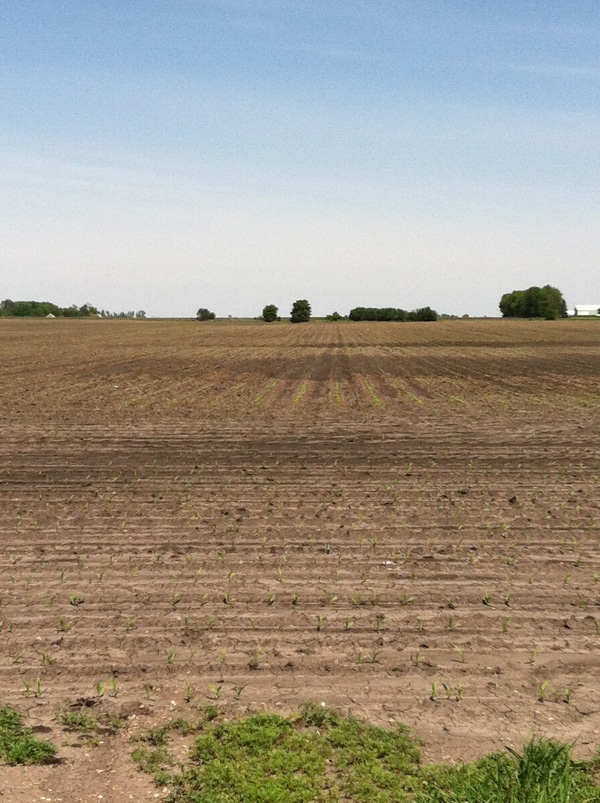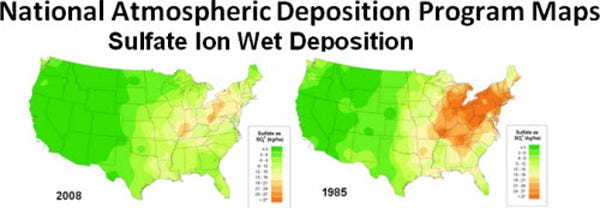June 8, 2012

After hearing repeated farmer accounts of sulfur improving corn yields, Fabian Fernandez, researcher and assistant professor of soil fertility and plant nutrition at University of Illinois, decided to test response himself. His three years of research farm and on-farm trials seem to confirm the reports.
“We have seen an increase in the frequency and intensity of crop response to sulfur application compared to Illinois trials conducted in the late 1970s, which showed little to no response,” he reports. “The responses are very variable, but we are identifying conditions where sulfur applications will be beneficial for farmers.”
Results from a 2006 Iowa State University study on corn yield response to sulfur application showed an average 38-bu. yield response to sulfur application for six sites across northeast Iowa. These sites were specifically chosen for their likelihood of being sulfur deficient.1
In small research farm plots not specifically chosen for deficiency, Fernandez found a more moderate average 5-bu. corn yield response to sulfur applications over three years. One of his Illinois on-farm plots, though, yielded surprising results.
“It produced a one-year, 51-bu. corn increase over the check with an application of sulfur,” Fernandez says. “That’s not a normal response by a long shot, but it goes to show that if sulfur is truly deficient it can severely limit yields.”
Less sulfur in rain
Sulfur deposits on farm fields have decreased over the years, in part as a result of emission-reducing technologies used at coal-fired power plants. There is less sulfur in the atmosphere and in rain that hits farm fields. The maps compare deposits in 2008 versus 1985.
There is no simple test for determining sulfur deficiency on individual farms, says Warren Dick, a researcher and professor in Environmental and Natural Resources at Ohio State University. Researchers have found, however, that certain factors can increase the likelihood of seeing a response to sulfur.

Soil type, cropping history and the crop planted can help determine on which acres farmers should try using sulfur. Soils with low organic matter are a good place to start as mineralization from organic materials is one of the leading sources of soil sulfur.2
“Soils with low organic matter, such as coarse texture (sandy) soils or eroded soils likely found on sloping hills, are more likely to be low in sulfur and respond to sulfur applications,” Fernandez says.
Sulfur is an essential ingredient for creating proteins, so high-protein crops (alfalfa, canola, soybean, corn silage) require more sulfur than low-protein producing crops.3 A lack of sulfur can impact nitrogen (N) utilization and yield.
Estimates vary, but roughly 1 lb. of sulfur is needed to be applied to balance up to 16 lbs. of applied N for a corn plant to produce proteins and grow2, 3 “If there’s adequate N but deficient sulfur the plant won’t grow to its potential until it has the sulfur to balance that N,” says Ron Chamberlain, GYPSOIL founder and chief agronomist. “Deficiencies are particularly critical in early growth corn because that’s when yield potential is set. If the upper soil profile, where seedlings are growing, is deficient of sulfur there will be less yield potential.”
Sulfur can be recycled back into the soil system through crop residue, Dick says, but in crops such as corn and alfalfa much of the protein – and sulfur – is removed with harvest.
“A 250-bu. corn crop removes quite a bit of sulfur every year without replacing it,” Dick says. “The same is true of hay fields. A lot of nutrients are removed when hay is cut and taken from the field, making alfalfa fields and mixed hay pastures good places to try sulfur applications.”
Sulfur sources
There are several sulfur sources producers can use to meet crop demand including elemental sulfur, fertilizers such as ammonium thiosulfate and gypsum.
“Elemental sulfur is used, but it is very acid forming so it isn’t ideal for every situation,” Dick says.
At 16% sulfur by volume, gypsum is a budget-friendly option. That is particularly true for growers who use Flue Gas Desulfurization (FGD) gypsum, a synthetic form that’s produced by the pollution control systems used to reduce emissions. Mined gypsum is significantly more expensive than FGD gypsum.
“The cost of a pound of sulfur in FGD gypsum is significantly lower than sulfur in other forms,” Chamberlain says. “It also provides sulfur in a plant-available form and moves sulfur through the soil profile so it’s where it needs to be in the form it needs to be in for plants to use it.” Gypsum provides the added benefit of 17-20% calcium and is often used in potato production and other calcium-loving specialty crops.
Extensive studies have shown all of the various gypsum sources are safe for land application, says Dick.
For Center Point, IN, producer Brad Brown, gypsum provides the double benefit of building soil structure and replenishing sulfur.

“We didn’t know about sulfur when we first started using gypsum in 1986 to loosen our soil for better drainage and rooting,” Brown says. “Getting sulfur with our gypsum was a win-win, it really helps our corn and it’s in the cheapest form we can get. Our yields are more even from acre to acre and year to year. The sulfur seems to excite the corn for good early season growth.”
Brown applies gypsum every other year. Initially he applied 1 ton/acre but has dropped to 1,400 lbs. every other year applied in the fall ahead of corn.
“As the soil structure builds we’re able to cut back on the rate but we will keep applying it to maintain the sulfur supply for our corn. We shoot for 200+ bu./acre,” says Brown.
Wisconsin farmer Ken Ihlenfeld agrees gypsum is becoming a valued tool in his cropping operation. “We were attributing sulfur deficiency symptoms to disease, but now that we know what it is we’re able to correct the situation and our yields improved after only one application,” Ihlenfeld says. “Gypsum is a win-win for us because it boost yields by correcting the sulfur deficiency and the calcium helps loosen up our compacted soils.
Footnotes:
1. Dealing With Sulfur Deficiency in Iowa Corn Production. Sawyer et al. 2009 Integrated Crop Management Conference - Iowa State University. 2009. P. 117-123. http://www.agronext.iastate.edu/soilfertility/info/Sulfur_ICM_Proc_2009.pdf
2. Sulfur: A Missing Link Between Soils, Crops, and Nutrition. Franzen and Grant. 2008. P. 105-115.
3.Fertility Needs of No-Till Corn, Soybean and Wheat, Raymond C. Ward, Ward Laboratories, Inc. Kearney, NE
You May Also Like




